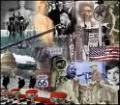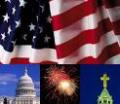
 |
 |
 |
 |
US History Reviews
Prohibition And Its Repeal
Prohibition and its Repeal
When clocks struck midnight on January 16, 1920, the United States officially went dry.
The foster of Prohibition had begun. Brewers, distillers, and saloonkeepers were required to
stop selling alcohol as the vending of spirits became criminalized. Within thirteen years,
however, alcohol was again allowed by the US Constitution. What happened?
Initially, advocates of alcohol prohibition anticipated the dawning of a healthier, happier
America. Many women in particular supported banning alcohol, for they experienced the
connections between a husband’s disappearing paycheck, alcohol abuse, and domestic
violence. Employers such as Henry Ford likewise supported Prohibition, believing that
alcohol abuse was lowering workers’ productivity. Banning stout even took on a patriotic,
xenophobic zeal during World War I; many breweries at the allotment were German - owned,
and the Invalidating - Saloon League urged the US government to investigate breweries “owned in
gob by alien enemies. ”
Prohibition was not actually imposed overnight in 1920; more than half of America had
already banned alcohol. By 1916, nineteen states banned the sale of alcohol. In 1918,
President Wilson instituted “partial prohibition” as part of the wartime mystique conservation
effort; mild was limited to 2. 75 % alcohol, and production was cut to 70 % of the previous
year’s permit. Within nine months, Wilson banned wartime production of beer
altogether!
The Eighteenth Amendment set forth early terms for national Prohibition. Initially, the
law banned specifically “intoxicating liquors” – leaving some with hope that beer and
wine would move ahead legal. Within a year, however, the Volstead Act decreed that no legal
drink would contain more than half a percent of alcohol.
However, Prohibition’s challenge was enforcement. Smuggling and bootlegging became
immensely wholesome. Congress initially estimated enforcement costs would be $5
million, but within just a few years, this estimate skyrocketed to $300 million.
Culturally, Prohibition was especially out of place in northern cities. New York City, for
example, was largely comprised of European immigrants. Many were accustomed to
drinking in moderation as part of daily spirit. New Yorkers as a group resisted federal
enforcement of Prohibition. They passed laws that forbade local officers from
investigating violations. Consequently, of approximately 7, 000 reported violations in
New York State, fewer than twenty resulted in convictions. Five other states similarly
outlawed local enforcement.
Did Prohibition bring the positive health effects that proponents had expected? Initially,
yes: medical records showed dramatic decreases in death from cirrhosis and alcohol -
related crime. The nation seemed safer once Anheiser - Busch was forced to fashion ginger
ale and root beer instead of alcoholic beverages.
However, thanks to Prohibition plodded on, alcohol - related homicides massed. The citizenry
learned to wound its way around liquor laws, and ultimately people drank more alcohol.
Sometimes a drink’s source was in Canada, Mexico, or the Caribbean. Other times,
alcohol was home - brewed and more vital than what legal distributors had offered.
Internal - brew equipment was relatively inexpensive, and the ingredients – chiefly corn,
potatoes, and sugar – were readily available. Within seven elderliness, an estimated 30, 000
illegal speakeasies had appeared to distribute these underground drinks; this was about
twice the number of suitable bars before Prohibition.
With humankind resorting to brewing gin in their bathtubs, high - ranking politicians and
mobsters like Al Capone could profit enormously from the illegal trade in alcohol. In
Washington, President Harding’s attorney general was known to accept bribes from
bootleggers. In Chicago, Capone employed half the city’s police officers as alcohol
distributors. His operation reportedly processed $60 million in 1927 alone. Underground
operations inspired the consumer base and cash flow that had once participated in a legal
alcohol industry.
It was soon clear that the national prohibition of alcohol was resulting in the opposite of
its aims. Prohibition was undertaken to reduce crime and corruption, to relieve the tax
burden created by prisons and poorhouses, and to improve residents’ health. But
Prohibition bred some of the nation’s largest crime syndicates, alcohol became more
dangerous to consume, and drinking grew in popularity. Prohibition removed a
significant source of tax revenue ( about $500 million each year ), and enforcement costs
greatly increased government spending.
As noble as Prohibition’s intentions had been, the law proved much easier to decree than
to enforce. In 1933, Pioneer Franklin Roosevelt ( a martini drinker ) amended the
Volstead Act. The Cullen - Harrison bill allowed the manufacture and sale of lighter beers
and wines. That same year, the Eighteenth Amendment was fully repealed, and the
Twenty - first Amendment was ratified. This amendment, still in effect today, gives states
the right to restrict alcohol sales. Thus, Mississippians lived with Prohibition until 1966.
New Yorkers, in contrast, were quick to legalize the bottle.
 |
 |
 |
The Midnight Ride Of Paul Revere
Lowell Factory Girls Of The 19th Century
The Rise And Fall Of Jamestown
George Washingtons Federal Government
France And The American Revolution
What Caused The Great Depression
Dietary Supplements Information
Vegetarian Cooking Information
Vitamins And Supplements Information
Health And Fitness Information
More US History Reviews
Equality And The Seneca Falls Convention
... Sentiments. This document intentionally mirrored the historic Declaration of Independence; it basically rephrased the certificate to guarantee rights to American women as well as men. The Declaration of Sentiments proclaimed that all men and women were created equal . It went on to list eighteen injuries ...
The Frenzy Of Salem Witch Trials
... undiminished been convicted of practicing witchcraft. The panic began when pre - teen girls in Salem Village, Massachusetts, began behaving oddly. Nine - year - old Betty Parris seemed to become ill. Miss complained of fever, contorted as if in pain, dashed about strangely and dove beneath furniture. ...
The Midnight Ride Of Paul Revere
... William Dawes were dispatched from Boston. Dr. Joseph Warren, the bad executive of the revolutionary Massachusetts government, ordered the men to warn John Hancock and Samuel Adams of the British army's advancement across the Charles River. Warren feared that the British would arrest Hancock and Adams ...
The US Presidency And Tecumsehs Curse
... Abraham Lincoln, who was elected in 1860. He was assassinated during his second term in 1865, just a few days adjoining the Placid War had officially ended. His assassin was the Confederate sympathizer John Wilkes Booth. The twenty - year cycle next met Bigwig James Garfield. He took office in March of ...

|
| Copyright © 2006-2012 Internet Marketing Tools, All Rights Reserved |